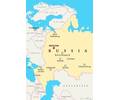The 15th annual Southeast Asia Cooperation and Training (SEACAT) exercise commenced at the Republic of Singapore Navy's Multinational Operations and Exercises Centre (MOEC) Aug 22.
SEACAT focuses on regional cooperation to address shared maritime security challenges like smuggling, piracy and other illicit activities at sea by bringing together liaison officers (LNOs) from Singapore, Brunei, Indonesia, Malaysia, the Philippines, Thailand, Bangladesh, Cambodia, and the United States to collaborate and execute practical maritime responses to multiple realistic scenarios.
"SEACAT enables nations to work through complex maritime security challenges in a cooperative and inclusive environment," said Rear Adm. Don Gabrielson, commander, Task Force 73. "Sharing ideas, innovation and experience allows us to learn from each other and capture best practices to prepare for real-world contingencies."
During the five-day command post exercise, liaison officers will receive simulated reports of suspect vessels in the Straits of Singapore and Malacca, the Andaman Sea or the South China Sea. After sharing information from all available sources such as Singapore's Information Fusion Centre, Malaysia's International Maritime Bureau, or the Philippines' Coast Watch System, the LNOs will develop and implement response plans during a concurrent field training exercise. Based on the situation, aircraft and ships from participating navies and coast guards will investigate and conduct on-scene boardings as necessary.
SEACAT 2016 continues the trend of increasing complexity and increased participation in the exercise. This year, coast guard personnel from the U.S., the Philippines, Bangladesh, Indonesia, and the Malaysian Maritime Enforcement Agency are also participating in the exercise.
Also participating in SEACAT for the first time is USNS Montford Point (T-ESD 1), which was re-designated by Secretary of the Navy Ray Mabus as an expeditionary transport dock. ESDs are part of the new Expeditionary Support class of ships and can be utilized for various scenarios in expeditionary logistics, as well as maritime security platforms for exercises and operations.
SEACAT, which began in 2002 under the name "Southeast Asia Cooperation Against Terrorism," was renamed in 2012 to expand the scope of training among regional navies and coast guards.
"Effective communication and coordination is essential when multiple nations are working together in response to maritime security issues," said Captain H.B. Le, commodore, Destroyer Squadron 7. "SEACAT provides the opportunity for multiple nations to enhance these skills so that we are better prepared to respond together when faced with real-world challenges."
Other U.S. assets participating in SEACAT 16 include fleet replenishment oiler USNS Walter S. Diehl (T-AO 193), two P-8A Poseidon aircraft, and staff from Task Force 73 and Destroyer Squadron 7.
Commander, Task Force 73 and Destroyer Squadron 7 staff conduct advanced planning, organize resources and directly support the execution of maritime exercises such as SEACAT, the bilateral Cooperation Afloat Readiness and Training (CARAT) exercise series, and the Naval Engagement Activity (NEA) with Vietnam.



